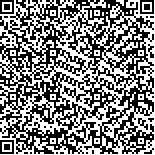|
|
|
| |
|
|
| 本文已被:浏览 3652次 下载 2242次 |

码上扫一扫! |
|
|
| 16S rDNA 克隆文库解析仿刺参(Apostichopus japonicus)苗种培育池中生物絮团的细菌群落结构 |
|
任利华1, 李斌1, 孙国华1, 张秀珍1, 杨建敏1, 姜芳1, 刘丽娟1, 刘兆存2
|
|
1.山东省海洋资源与环境研究院 山东省海洋生态修复重点实验 烟台 264006;2.山东华春渔业有限公司 东营 257236
|
|
| 摘要: |
| 通过采集东营和蓬莱地区采用生物絮团技术的仿刺参(Apostichopus japonicus)苗种培育池(DYt 和PLt)及其对照池(DYc 和PLc)海水样品, 构建细菌16S rDNA 克隆文库, 对其中细菌群落的多样性和群落组成结构进行了分析。结果表明, 四个文库Coverage 值在34.7%—54.8%之间, 文库丰富度指数(Chao) 66.2—314.1, Shannon 多样性指数从3.01—4.07 变动, Pielou 均匀度指数0.68—0.85, 样品的细菌群落均具有很高的多样性, 蓬莱仿刺参苗种培育池细菌多样性均高于东营; 生物絮团文库中细菌包括拟杆菌门(Bacteroidetes)、变形细菌门(Proteobacteria)、厚壁菌门(Firmicutes)等八个菌门和未知类群, 黄杆菌群(Flavobacteria)、α-变形菌群(Alphaproteobacteria)和芽孢杆菌群(Bacilli)为主要优势菌群; DYt和PLt处理组文库细菌多样性减少并出现特征菌群, 生物絮团调控技术改变了仿刺参苗种培育环境的微生物群落结构。生物絮团的细菌群落结构研究, 为揭示生物絮团的作用机制并进一步有效利用提供研究基础和依据。 |
| 关键词: 16S rDNA 克隆文库 细菌群落结构 生物絮团 仿刺参育苗池 |
| DOI:10.11693/hyhz20140900241 |
| 分类号: |
| 基金项目:山东省农业重大应用技术创新项目, 2011—2013; 山东省自然科学基金面上项目, ZR2013CM029号; 山东省现代农业产业技术体系——刺参创新团队, SDAIT-08-011-02号; 海洋经济创新发展区域示范项目, 20130125号; 山东省水生动物营养与饲料泰山学者岗位经费资助。 |
|
| STRUCTURE OF BACTERIAL COMMUNITY IN BIOFLOC FROM APOSTICHOPUS JAPONICUS BREEDING PONDS REVEALED BY 16S rDNA CLONE LIBRARY |
|
REN Li-Hua1, LI Bin1, SUN Guo-Hua1, ZHANG Xiu-Zhen1, YANG Jian-Min1, JANG Fang1, LIU Li-Juan1, LIU Zhao-Cun2
|
|
1.Shandong Marine Fisheries Research Institute, Shandong Provincial Key Laboratory of Restoration for Marine Ecology, Yantai 264006, China;2.Shandong Huachun Fisheries Ltd., Dongying 257236, China
|
| Abstract: |
| We constructed 16S rDNA clone libraries (DYt, DYc, PLt, and PLc) of biofloc and the control in Apostichopus japonicus breeding ponds in Dongying and Penglai, and analyzed the bacterial diversity and bacterial community structures. The results show that the coverage of the four libraries ranged from 34.7% to 54.8%, the richness index (Chao) was 66.2—314.1, Shannon diversity index was 3.01—4.07, and Pielou evenness index was 0.68—0.85. Results show that the bacterial diversity was greater in the in the A. japonicus breeding pond in Penglai than that in Dongying. The bacteria in biofloc library were categorized into eight phyla, including Bacteroidetes, Proteobacteria, Firmicutes, and other unknown taxes. Flavobacterium, Alphaproteobacteria and Bacilli were the main bacterial communities. The diversity of DYt and PLt decreased and characteristic bacterial group were presented in the two libraries. The biofloc technology had changed the microbial community structure in aquaculture environment. Study on bacterial community structure of biofloc can help understanding the mechanism. |
| Key words: 16S rDNA clone library bacterial community biofloc Apostichopus japonicus breeding pond |
|
|
|
|
|
|
